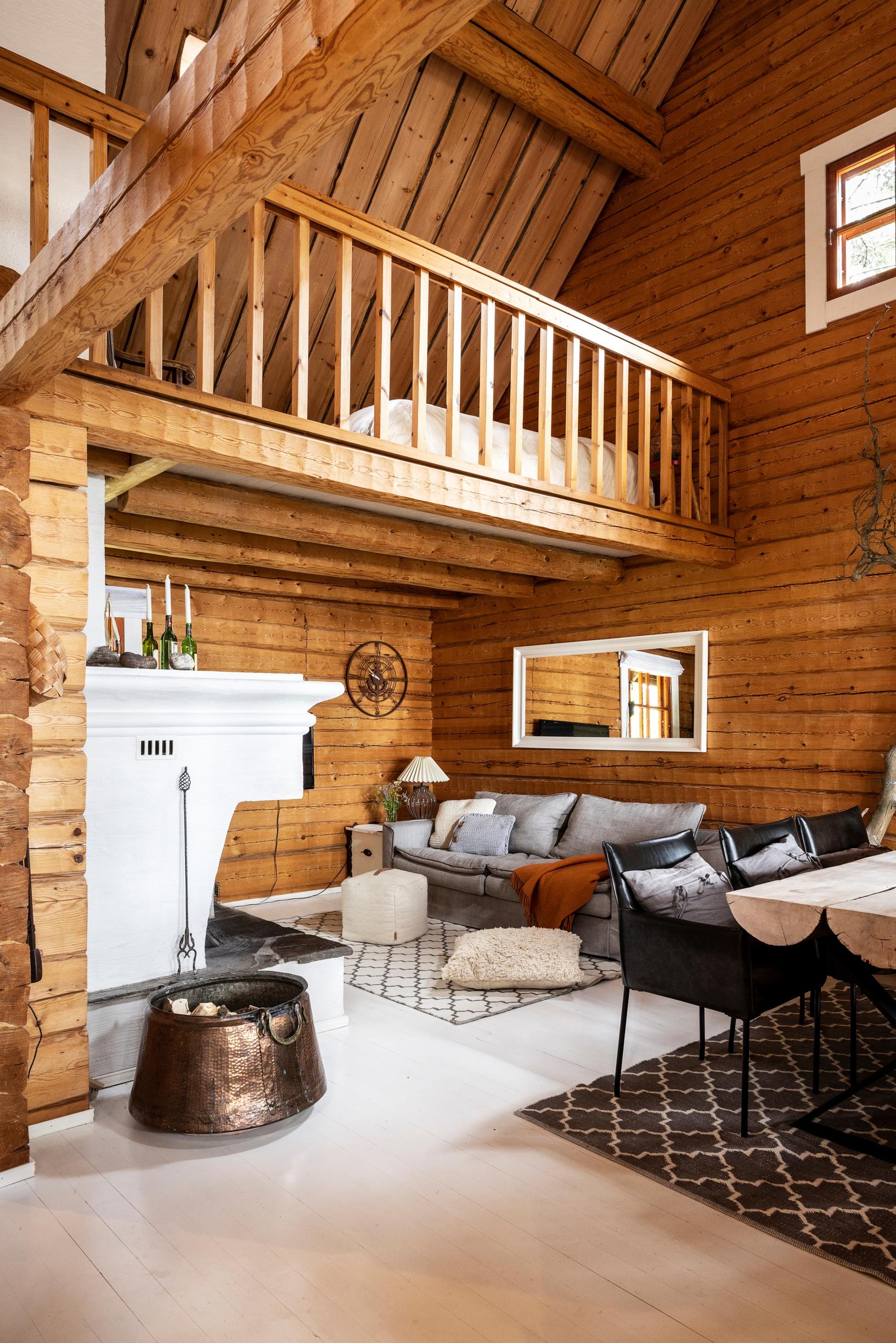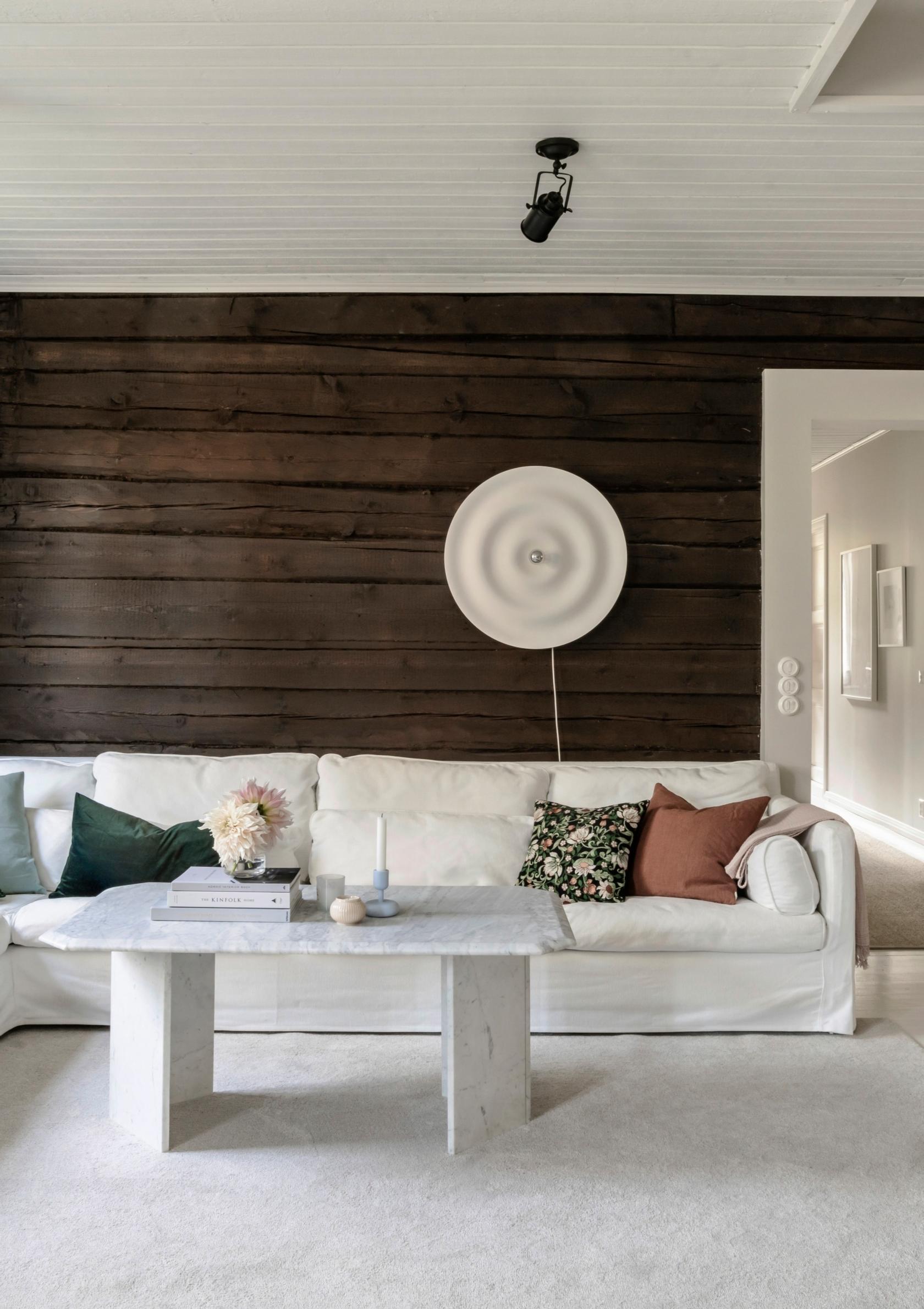
Log wall cleaning and treatment—read a professional’s tips for proper log surface maintenance
A log wall stands the test of time and provides clean indoor air for generations, as long as it is built and maintained correctly. A log-building expert shares tips on cleaning, treatment, and finishes.
How to clean an old log wall efficiently?
It’s best to begin tackling deep dirt with the gentlest method possible. First, try a cleaning solution made specifically for log walls, taking care not to use too much water. If the dirt remains stubborn, you can move on to mechanical sanding. A nylon-bristle cup brush on an angle grinder is effective but still relatively gentle. A flap disc is another option. Be extremely careful when using an angle grinder. The most effective cleaning methods are soda, glass-bead, or dry-ice blasting [in Finnish]. Dry ice is the easiest because it leaves no additional waste aside from the dirt removed from the wall. It’s best to leave all blasting tasks to professionals.
What is the best surface treatment?
Many people enjoy the appearance and scent of an untreated log, and a log wall’s breathability, which is at its best without a surface treatment. If you want to keep a new log surface light in color, you can apply a natural wax that includes UV protection. Waxes and breathable log paints also come in various shades. The most important point to remember is never to use lacquer-based products, because they disrupt the wood’s natural moisture control.

How do you fix odor issues?
If a log house has odor problems, something has gone wrong. Logs themselves don’t contain substances that cause unpleasant smells. From the 1930s until the 1990s, chlorophenol-based wood preservatives were used in sawmills to prevent blue stain fungi. Over time, in certain conditions, these can develop into tetrachloroanisole, which can smell quite strong. Unfortunately, the odor can be very difficult to eliminate. While the smell can cling to a log wall, the log itself isn’t the source. You need to find and remove the original source before tackling the smells that have attached to other surfaces. At that point, professional ozone treatment [in Finnish] may help.
How is log replacement done?
Replacing the bottom course of logs was a common maintenance job in the early 20th century. It usually involved earthen bank foundations, where soil was used as insulation. Moisture rising from the ground could rot the bottom row of logs. Newer log structures don’t face this issue because their foundations and subfloor construction are more durable. Modern laminated logs are also easier and cheaper to work with than solid milled or round logs. That said, solid logs are still used because they lend a natural feel to living spaces.

How do you finish a log wall indoors?
The most important thing is to protect the structure’s natural properties—especially the log’s breathability. Plastic-based products are off-limits. You can use cellulose insulation rather than mineral wool that seals too tightly. Then, for instance, use a fabric-reinforced air barrier paper, and top it with wood paneling that isn’t painted in a way that blocks breathability. While gypsum board is easy to install, it’s too impermeable for a log structure. Allow for settling if your house is built with solid logs or standard laminated logs. This is not necessary if the house is built with modern non-settling logs.
Expert: Master log builder Tuomas Jaara


